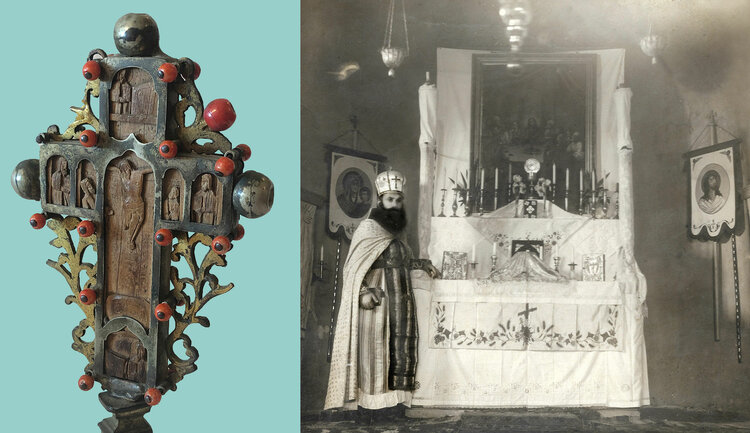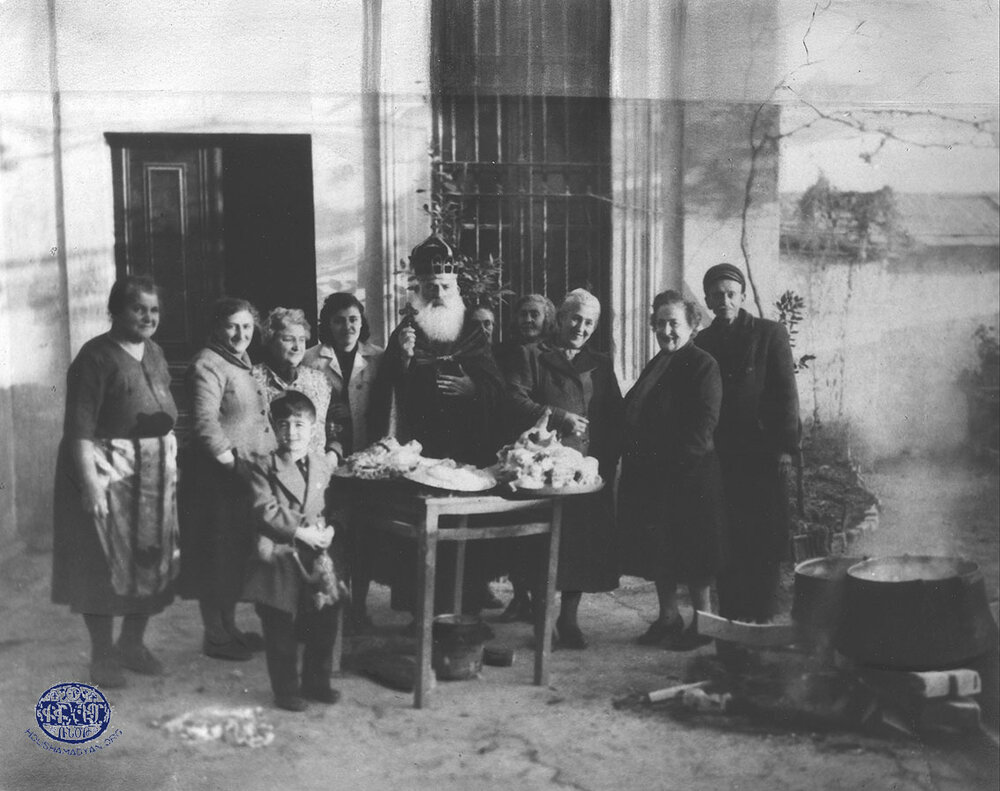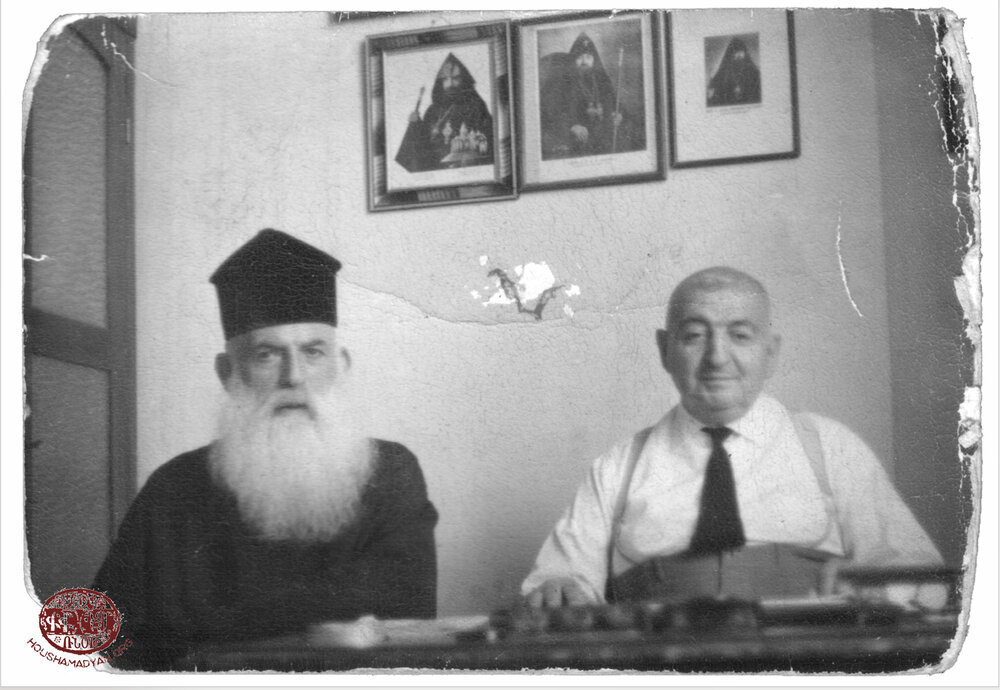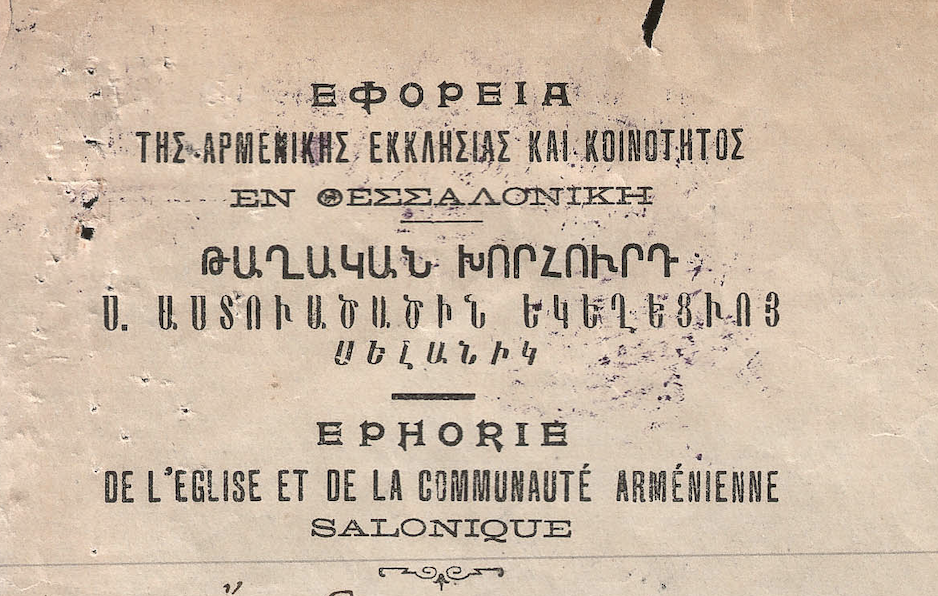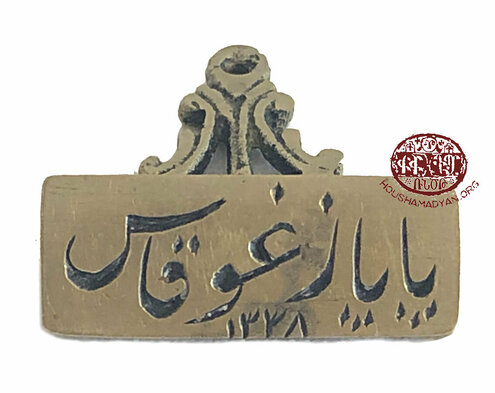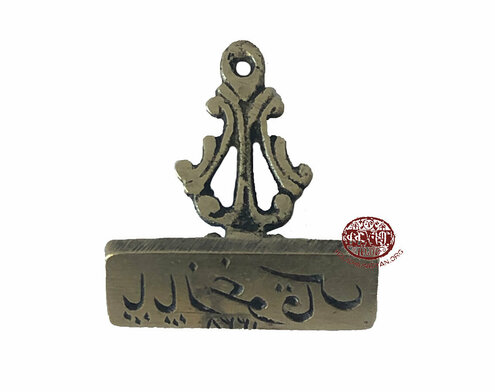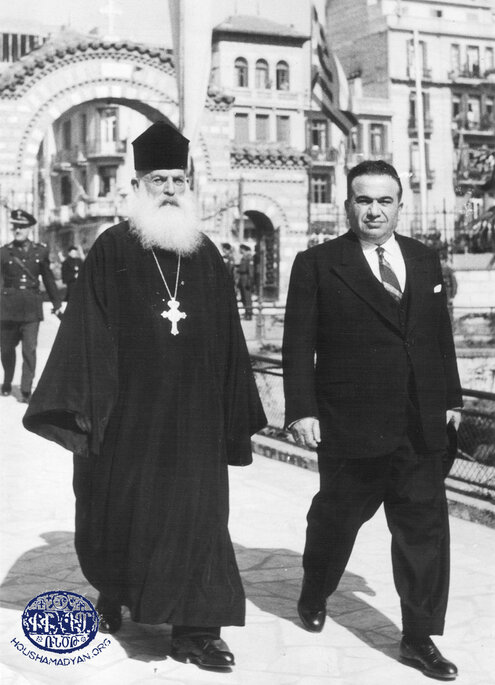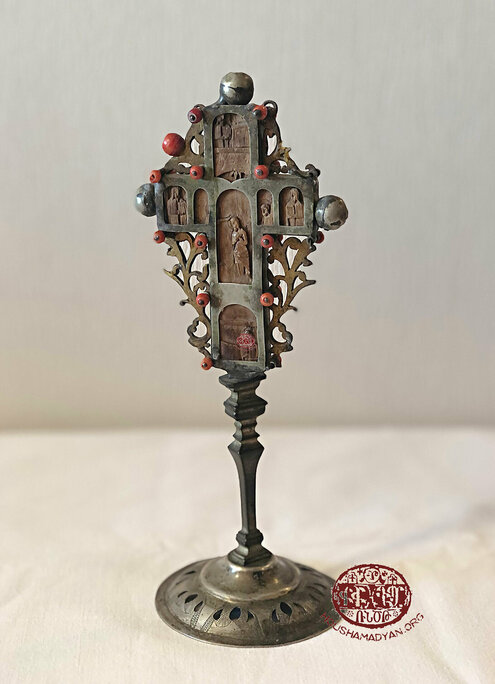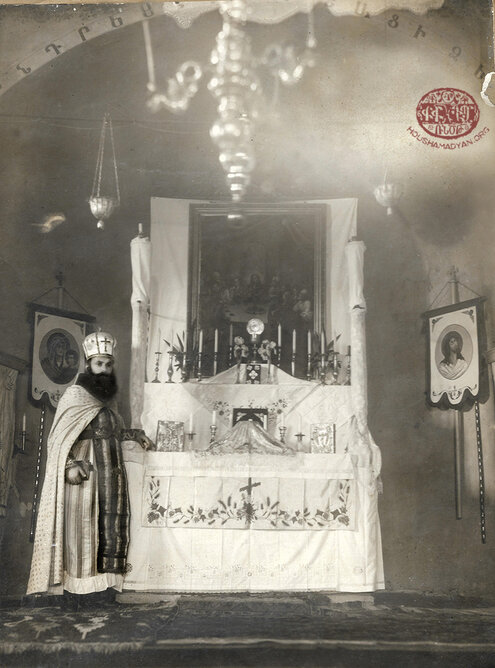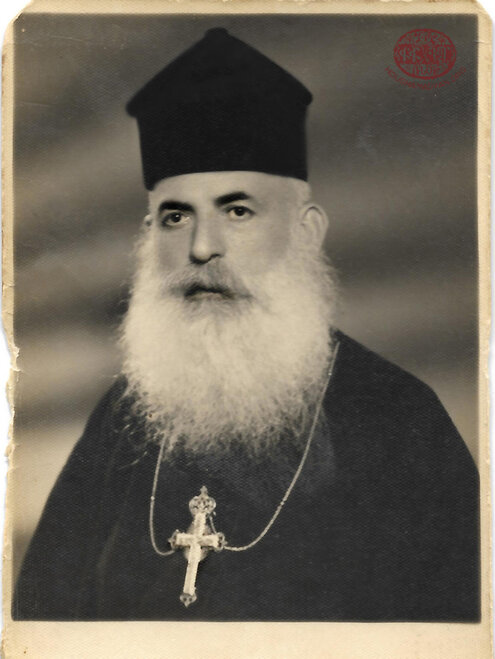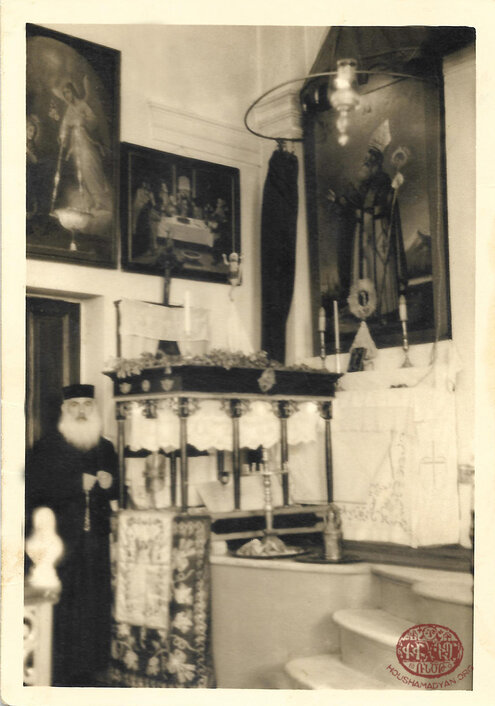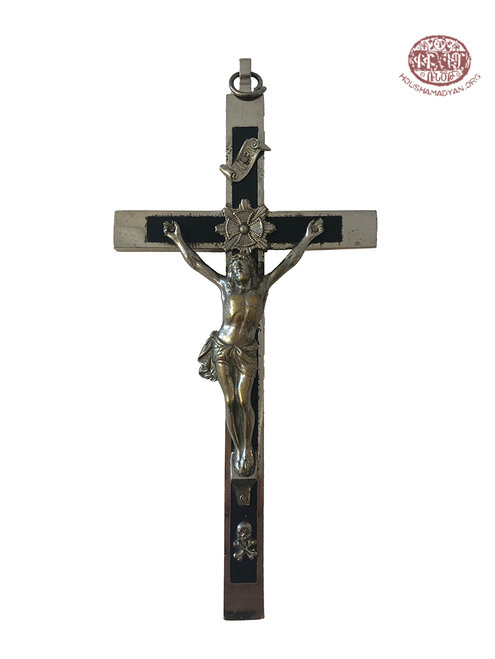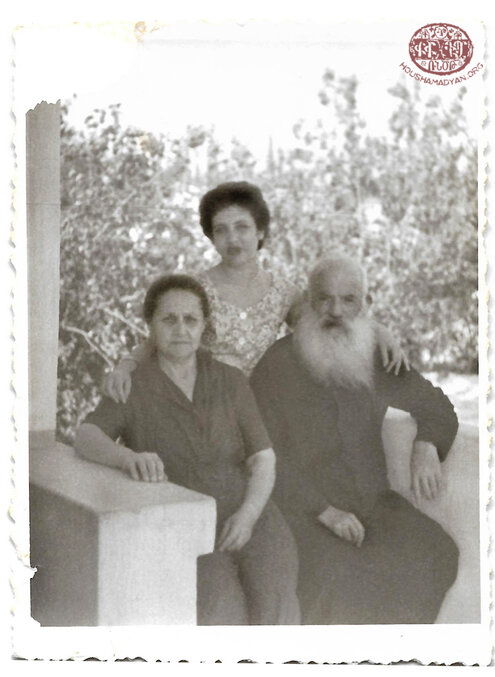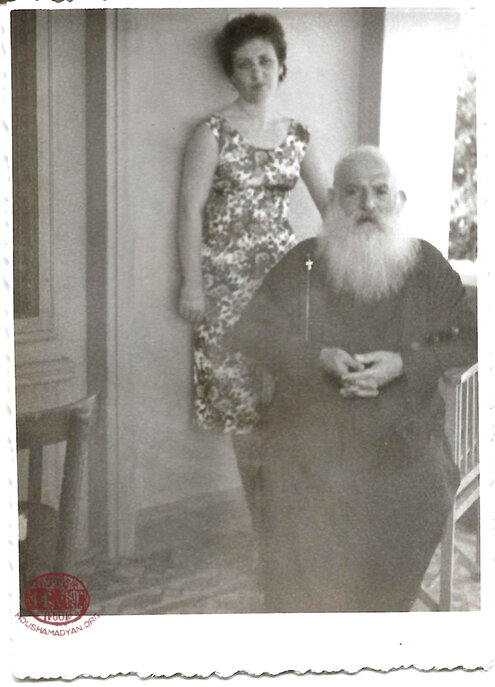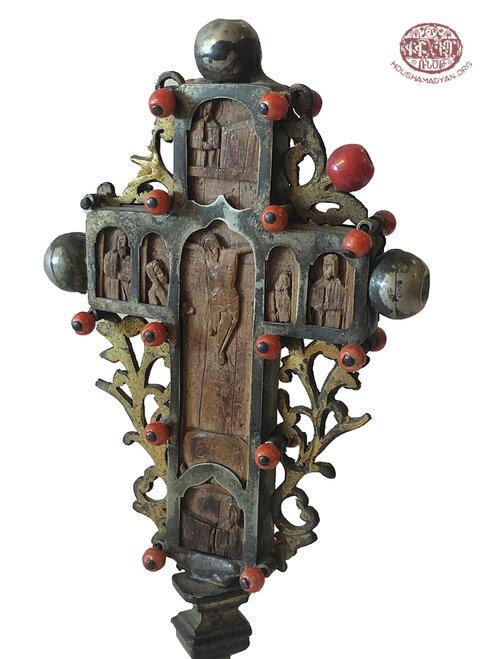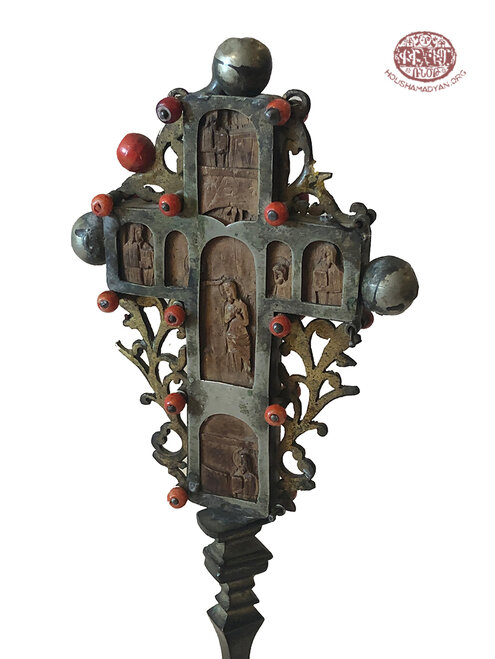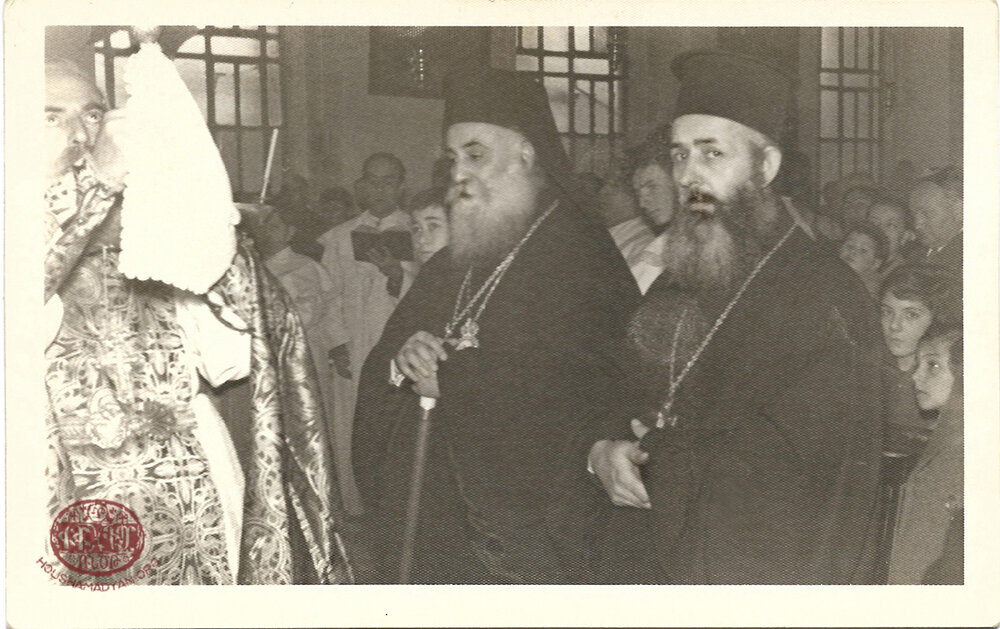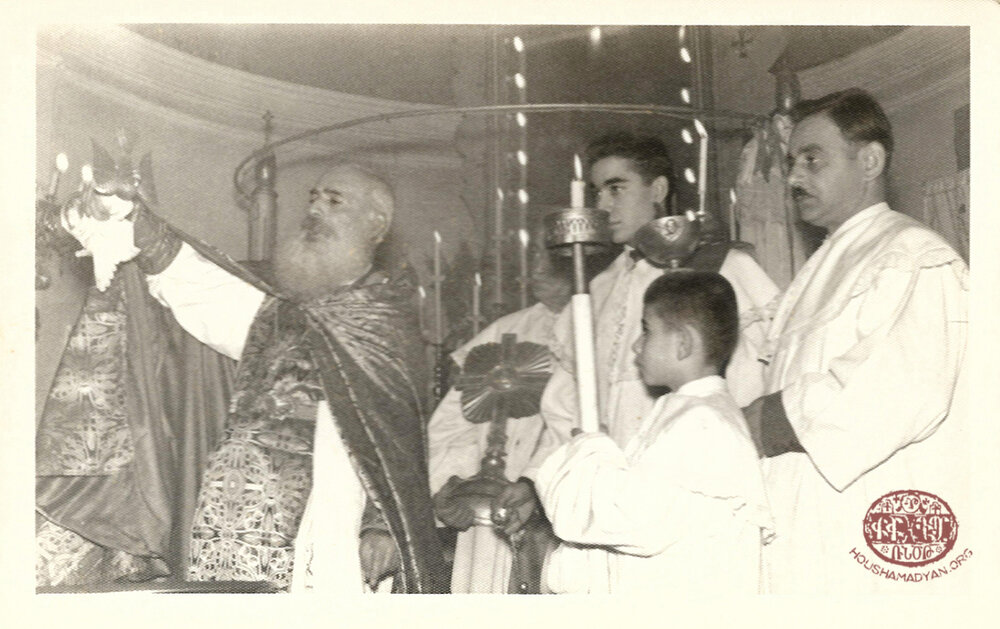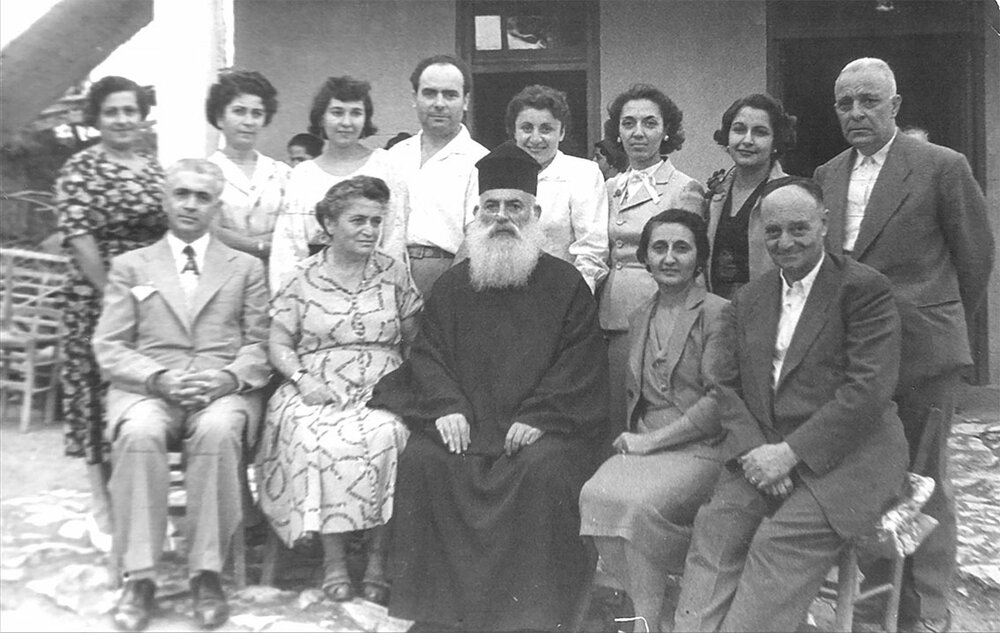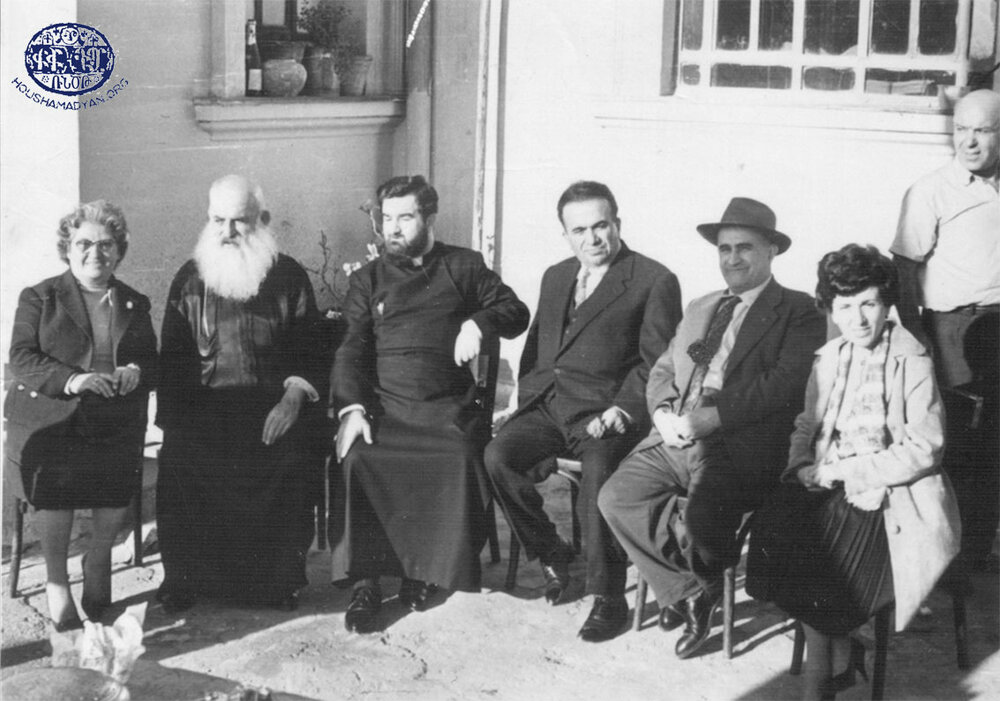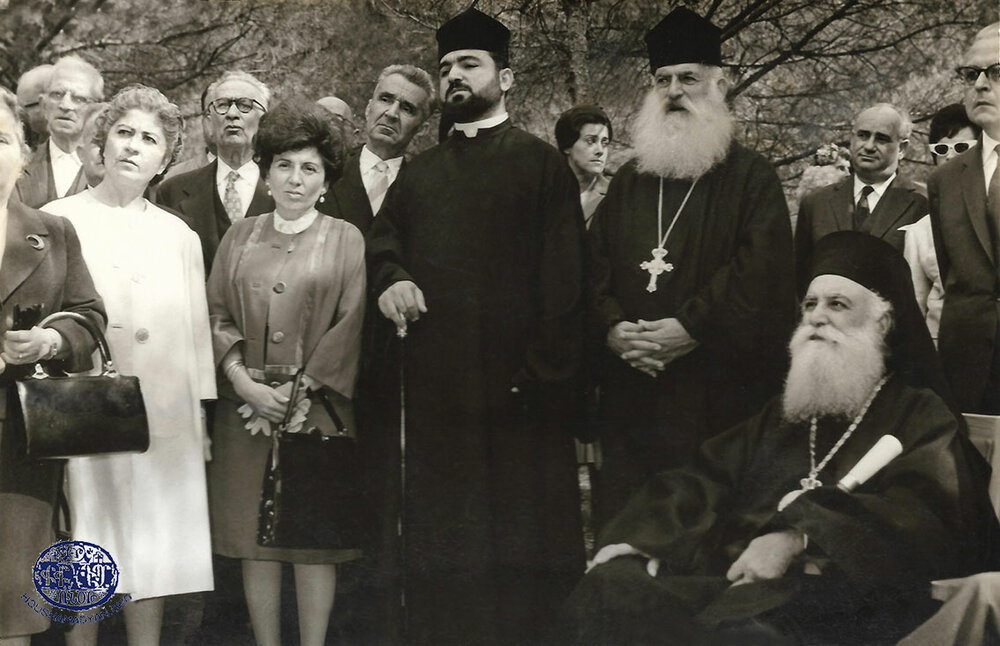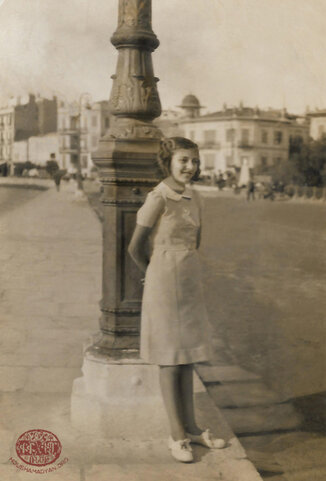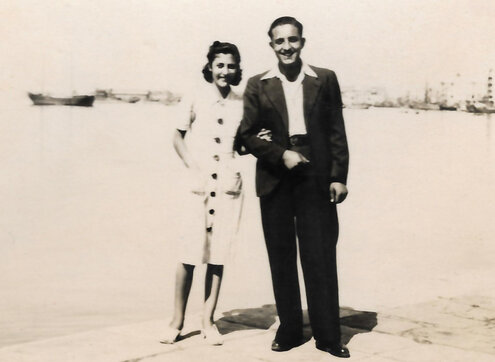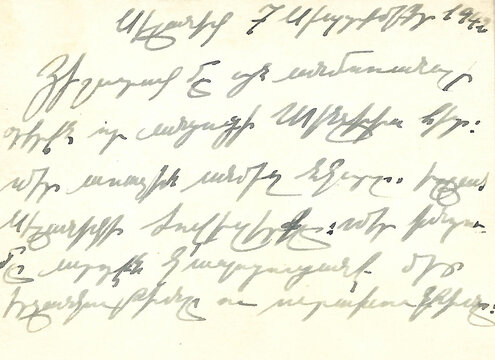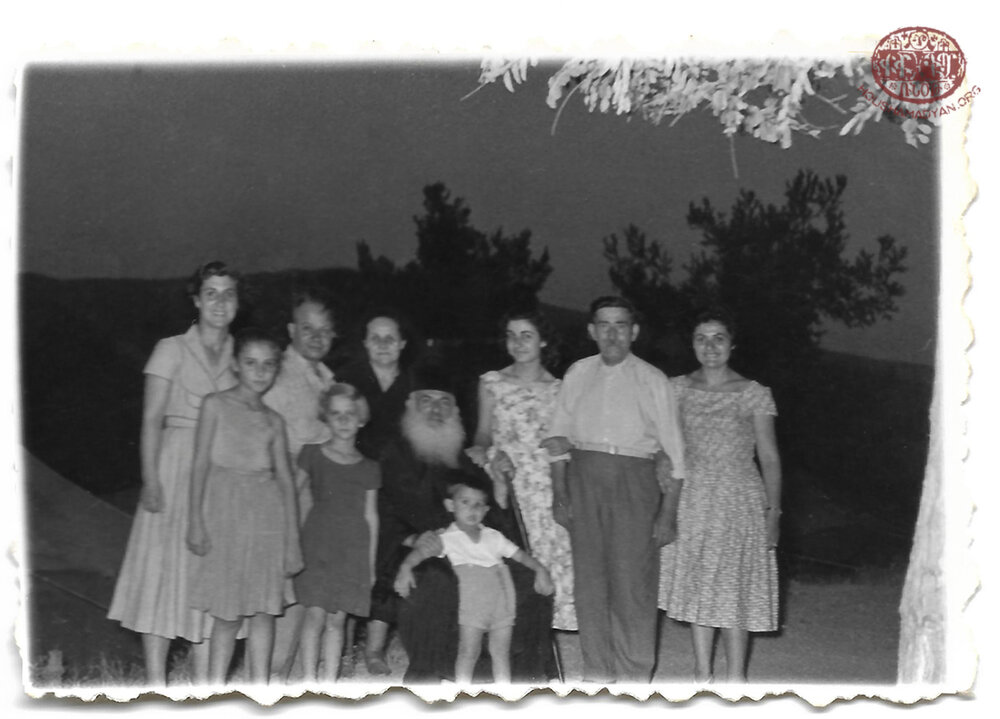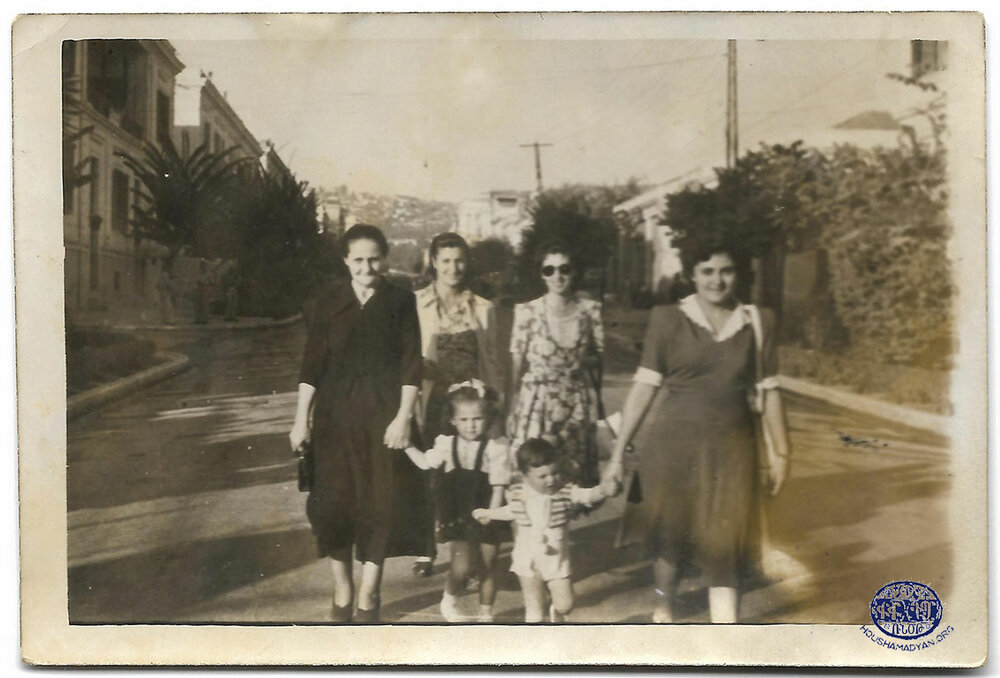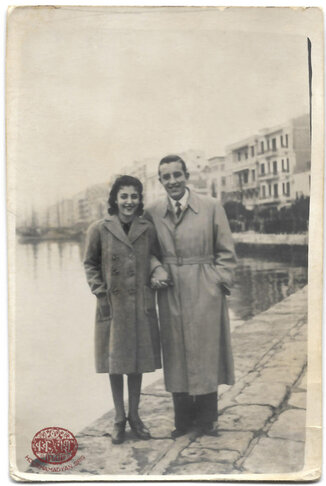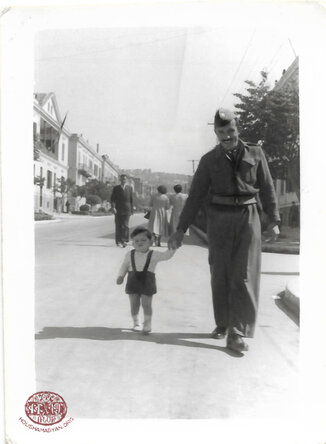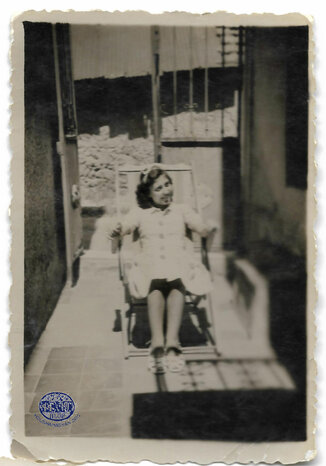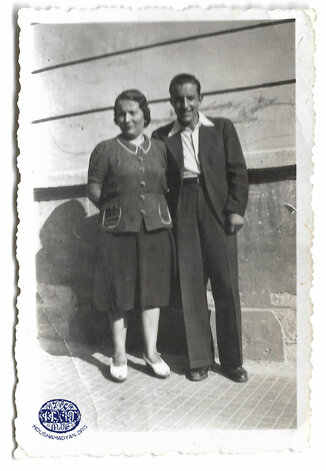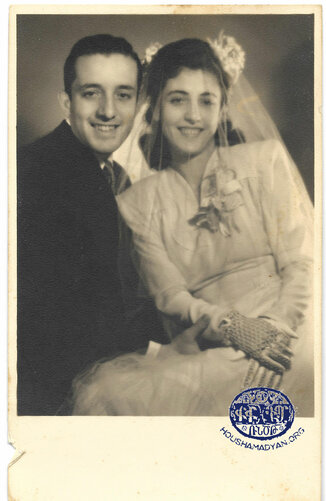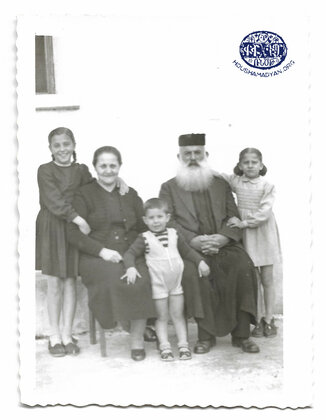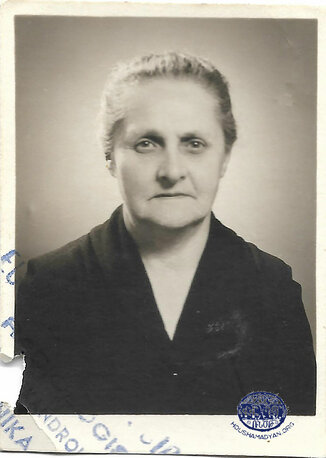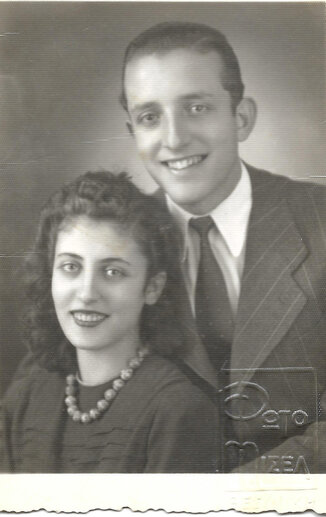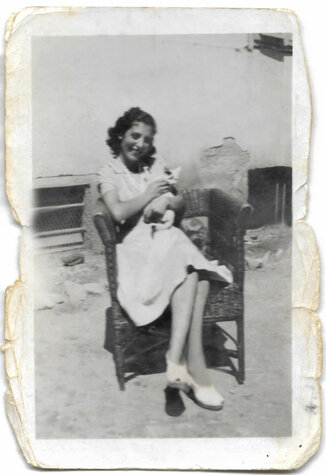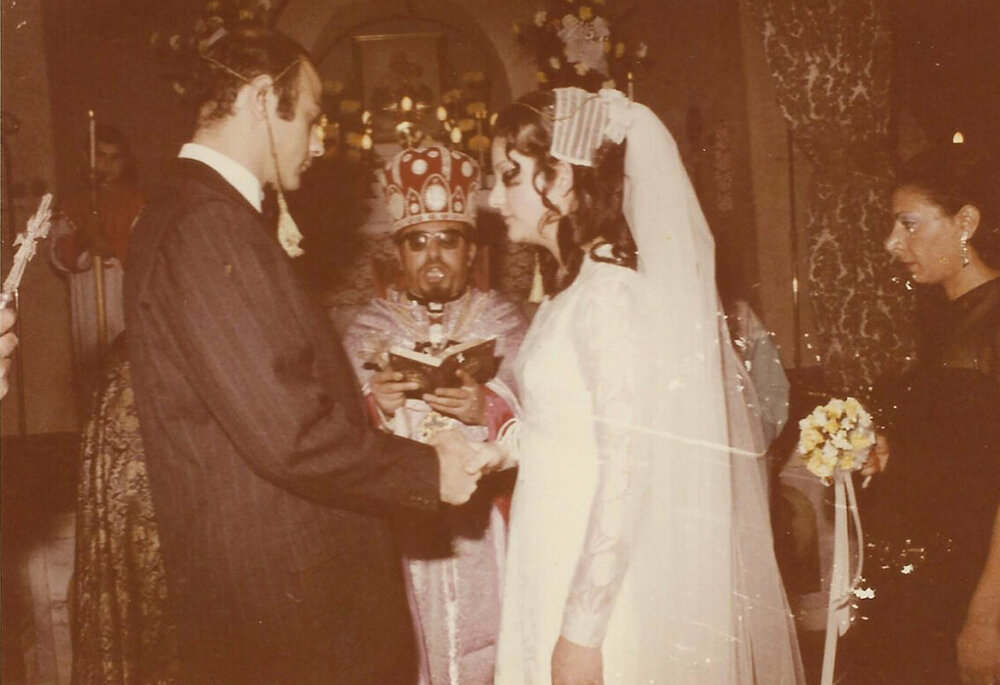Filisian and Papazian Families – Buenos Aires
Translator: Simon Beugekian, 29/04/22 (Last modified 20/05/22)

This page focuses mostly on the history of the Filisian family. Most of the photographs and memory objects presented here are currently kept in Buenos Aires, in the possession of Lucia Der Meguerditchian (nee Papazian). Lucia is the daughter of Denchali Papazian (nee Filisian).
Denchali’s parents hailed from the Medz Nor Kyugh (present-day Yeniköy) village in the region of Bursa. Denchali’s father, Mgrdich Filisian (later Father Ghougas Filisian), was born in this village in 1898. He had two sisters, one of whom was named Yenos, and the other whose name is unknown. They lived in Medz Nor Kyugh, in a two-story house. Mgrdich lost his mother at a young age and was raised by his unmarried aunt (father’s sister).
According to family lore, the surname Filisian originated with the Turkish word filiz, which translates into “bud” or “sprout.” Ostensibly, the Filisians were svelte and tall like a sprouting or budding plant.
Father Ghougas was ordained into the priesthood in 1919 and served in the village of Karsak in Bursa region [1]. He married Santouhi Aprahamian.
According to family tradition, it was Father Ghougas’ aunt who first approached Santouhi’s mother and asked for the former’s hand. Santouhi’s mother initially refused the request, as she didn’t want her daughter to be a priest’s wife. The next attempt was made by Mgrdich’s sisters, Yenos and his other sister, whose name is unknown. They first spoke to Santouhi, who assented to be married to Mgrdich. The two sisters decided to abduct Santouhi, and successfully did so. Mgrdich and Santouhi were then married under these circumstances. The story was brought up by Santouhi’s mother many years later, when she had joined her daughter’s family in Greece. While playing cards with Father Ghougas’ sisters, she recalled the events of the “abduction,” remarking, “Those who can abduct my daughter won’t shrink from cheating at cards.”

During the years of the Genocide, Mgrdich (later Father Ghougas) was forced into one of the Ottoman army’s amele taburları (labor battalions). These were the infamous army units into which many Armenians were levied before being murdered. Fortunately, Mgrdich survived. But his family were deported, as were Santouhi and her mother.
After the end of the First World War, Armenian survivors returned to the Bursa region. But Father Ghougas and Santouhi's new life did not last long in Bursa region's Karsak village. The Greco-Turkish War began, and like thousands of other Christians (both Armenian and Greek), the Filisian family left the Bursa region for good and took the road of exile. It was probably during this chaotic time that Santouhi lost trace of her mother. We don’t know much about what happened to her, but she was reunited with Santouhi many years later, in Greece.

The Filisians first made their way to Edirne, and thereafter to Plovdiv, Bulgaria. After staying in Plovdiv for some time, they departed for Greece. At first, they lived in Kavala, then, in 1924, they moved to Komotini (Gyumyuldjina). Father Ghougas served as a priest in all of these locales.
After living in Komotini for six-seven years, Father Ghougas and his family moved to Thessaloniki.
Father Ghougas served as the spiritual leader of the Thessaloniki Armenian community until 1964. In other words, he served the community for more than 30 years. The photographs presented on this page are evidence of his active participation in the community’s religious, cultural, and social life.
When Greece was occupied by Nazi forces during the Second World War, soldiers who had deserted from the Red Army sometimes made their way to Thessaloniki. Among them were also Armenian soldiers. Naturally, these men were determined to avoid being arrested by the Nazi authorities, and thus either went underground or joined the Greek resistance. According to family tradition, Father Ghougas provided shelter for some of these Armenian Red Army soldiers in a secret compartment of the old baptistery of the Holy Virgin Armenian Church of Thessaloniki.
Father Ghougas retired from the priesthood in 1964. In 1967, alongside his family, he moved to Argentina, where he lived in the city of Cordoba until his death in 1969.
Father Ghougas and Santouhi had three daughters: Hermon (born in Kavala in 1923), Denchali (born in Komotini in 1925), and Sona (born in Thessaloniki in 1931 or 1932). Denchali was Lucia’s mother.
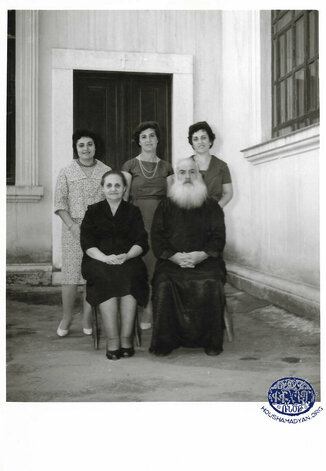

Hermon married Shavarsh Gousigian (born around 1905). The couple would later change their surname to Kousikian. Shavarsh was born in the small city of Nazilli, located east of the city of Aydın. He was the son of Vartouhi and Hovhannes. Hovhannes was killed during the Genocide, and the rest of the family were deported in 1915 and arrived in Mersin. Shavarsh’s two brothers, Kevork and Sarkis, enlisted in the Ottoman army during the war. Shavarsh also had three sisters, Srpouhi, Araksi and Nvart. Srpouhi was also killed during the deportations. After the end of the First World War, the surviving members of the family returned to Nazilli. They remained there until the last stages of the Greco-Turkish War, and in 1922 fled to Greece alongside thousands of other Christian refugees.
After the end of the First World War, the surviving members of the Gousigian family left Mersin around 1920, first settled on the Greek island of Cephalonia, and later relocated to Thessaloniki. There, Shavarsh worked as a cobbler. Shavarsh and Hermon married in Thessaloniki. Shavarsh’s mother, Vartouhi; his sisters, Araksi and Nvart; and his brother, Sarkis, all moved to Soviet Armenia during the years of organized Armenian emigration (1946-1947). Hermon and Shavarsh had three children: Shake, Vartouhi, and Mgrdich. In 1965, they left Greece for Argentina and settled in the city of Cordoba.
Denchali married Onnig Papazian, who was born in 1919, in Rodosto. Onnig was his family’s only son. His mother was Makhtig, born in Adapazar; and his father was Garbis. The Papazian family lived in Rodosto/Tekirdagh. It is said that Makhtig was a maid who worked for the Papazian family. She and Garbis fell in love and married. Garbis was a jovial man who enjoyed singing and reciting poetry.
After moving to Thessaloniki, the Papazian family was engaged in the fabric trade. In the first years of the Second World War, Onnig enlisted in the Greek army. This also allowed him and his family to receive Greek citizenship. In 1941, when the Nazis invaded Greece, the Greek army was dissolved and the country experienced widespread famine. In view of these difficult circumstances, many Greeks traveled to Germany to work as laborers. Presumably, Onnig was in the first group of Greek men to leave for Germany, where he worked in a munitions factory in Munich.
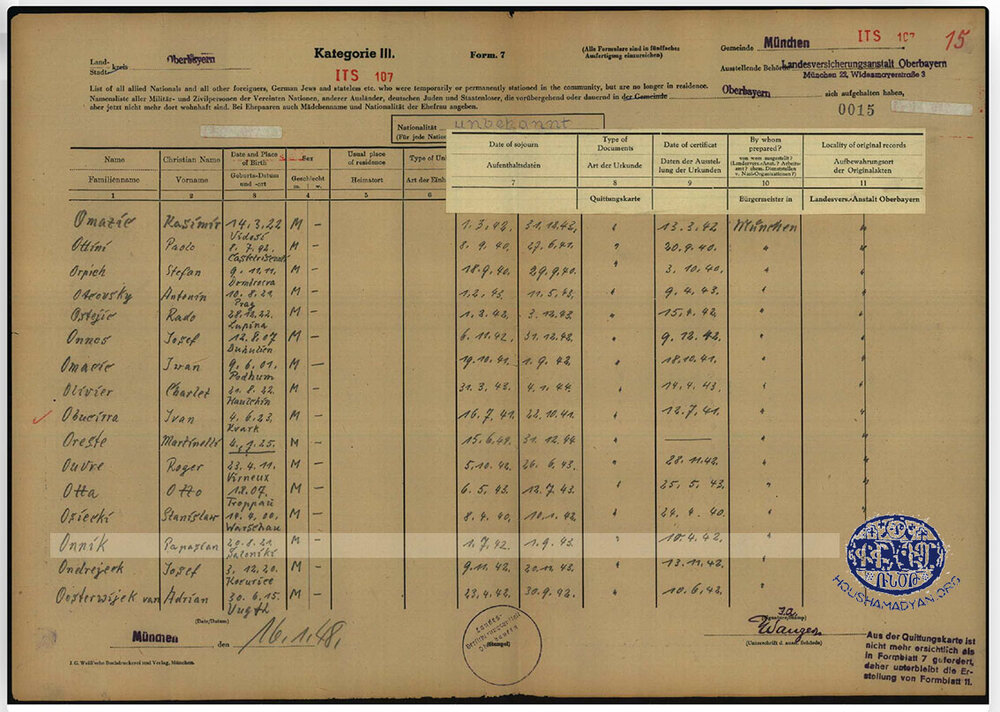
In 1951, Denchali, Onnig, and their children, Garo and Lucia, emigrated to Argentina.
Sona Filisian married Artin Papazian in Athens, in 1958. They lived in Athens until 1967, and thereafter emigrated to Argentina. They had one daughter, Santouhi.
[1] Asadourr Y. Magarian, Յուշագիրք Թրակիոյ եւ Մակեդոնիոյ հայ գաղութներու [A Memory Book on Thrace and Macedonia Armenians], published by the newpaper Horizon, Salonica, 1929, p. 416; "Father Ghougas Filisian" [in Armenian], Յունահայ տարեգիրք, Nor Or publication, Athens.


